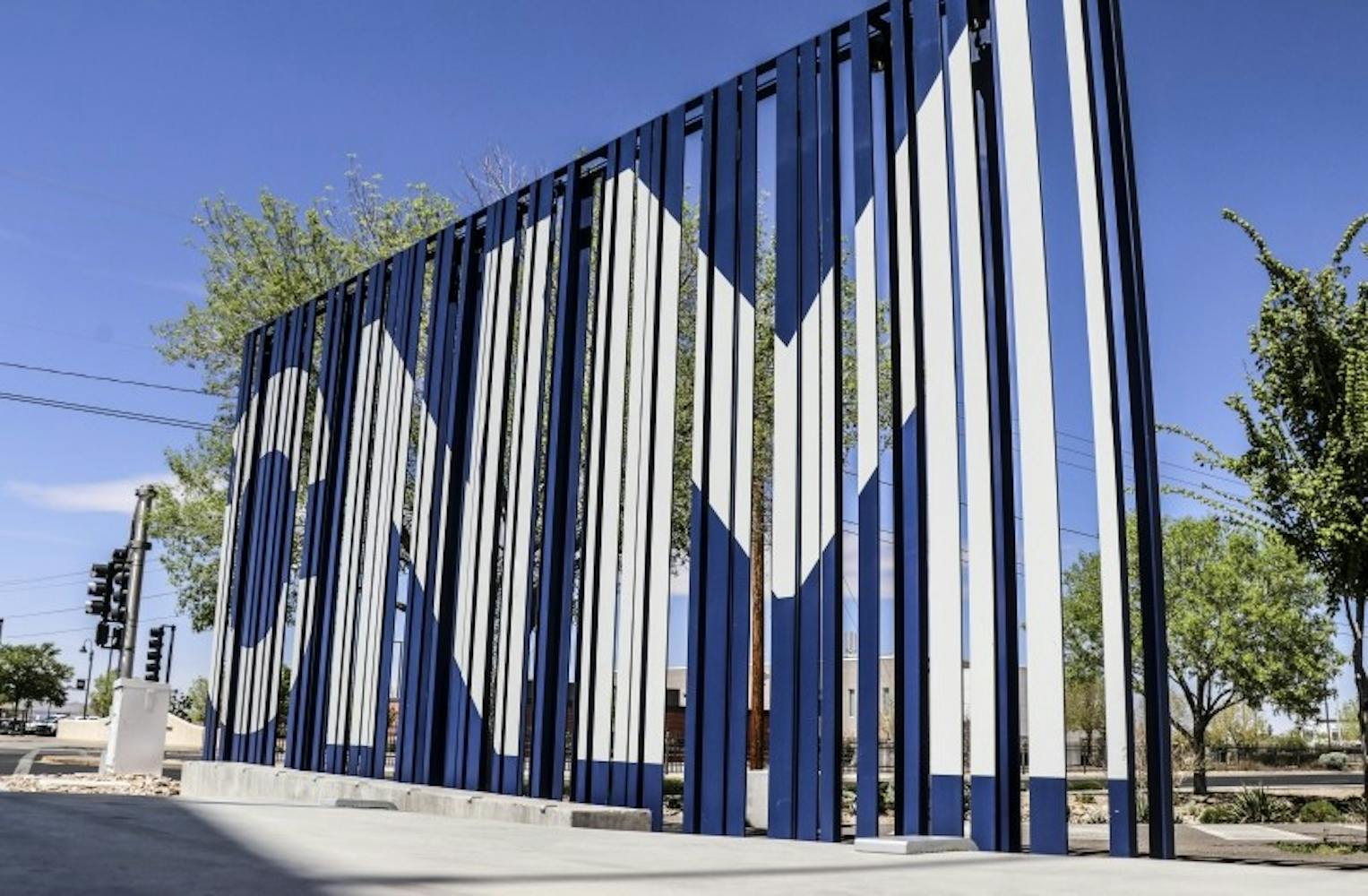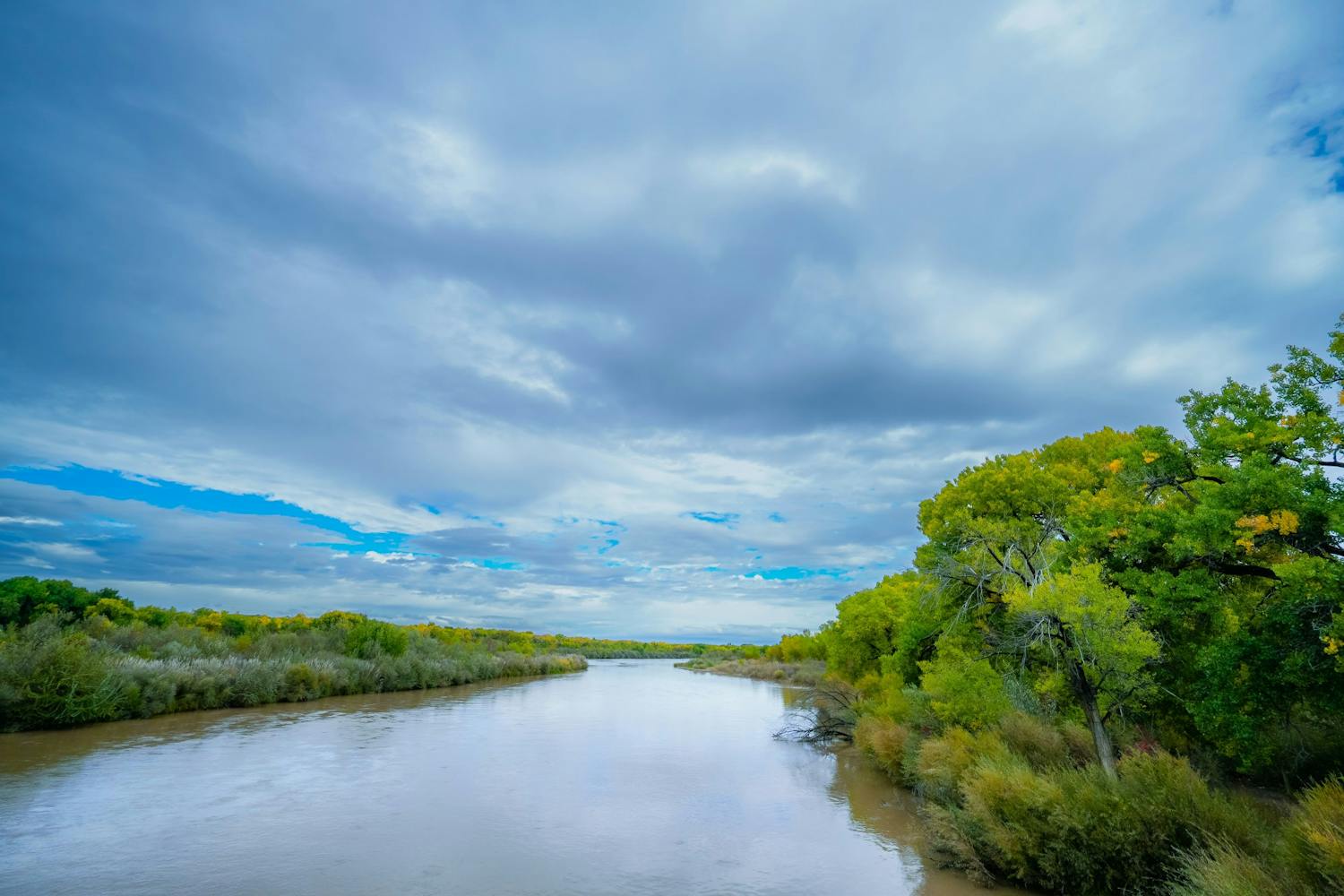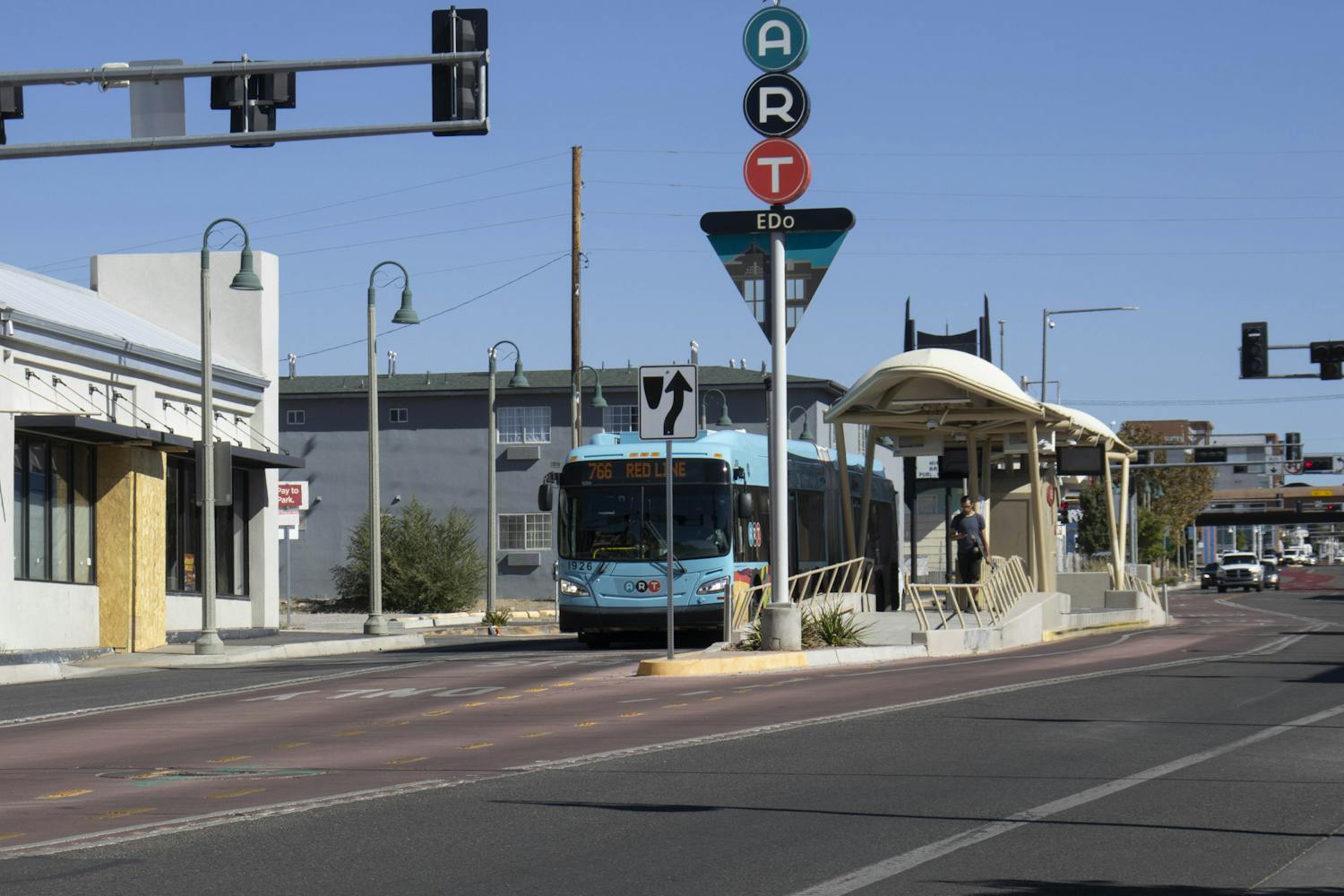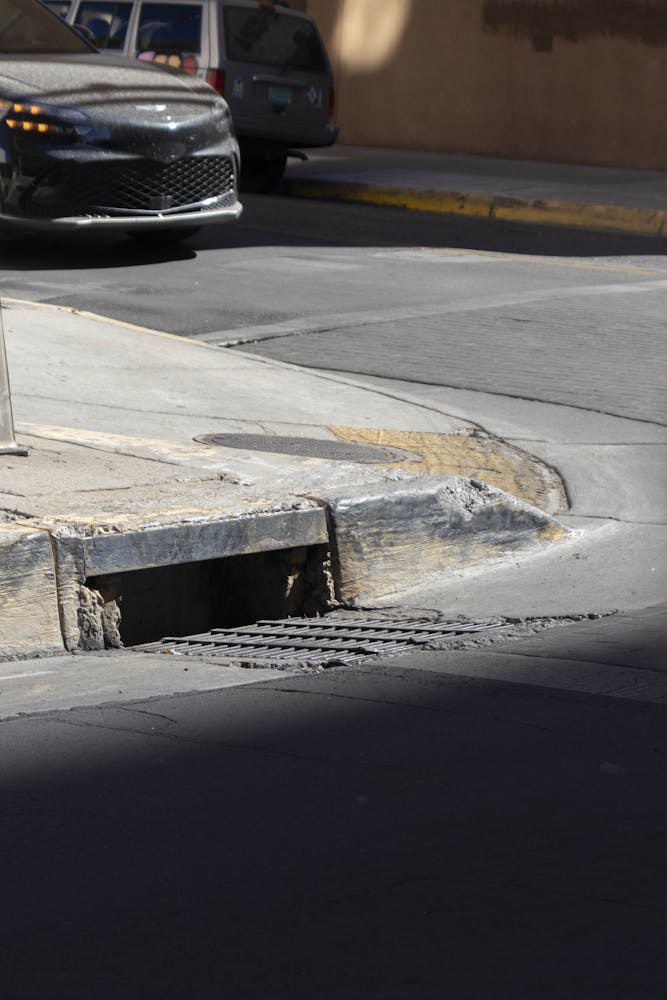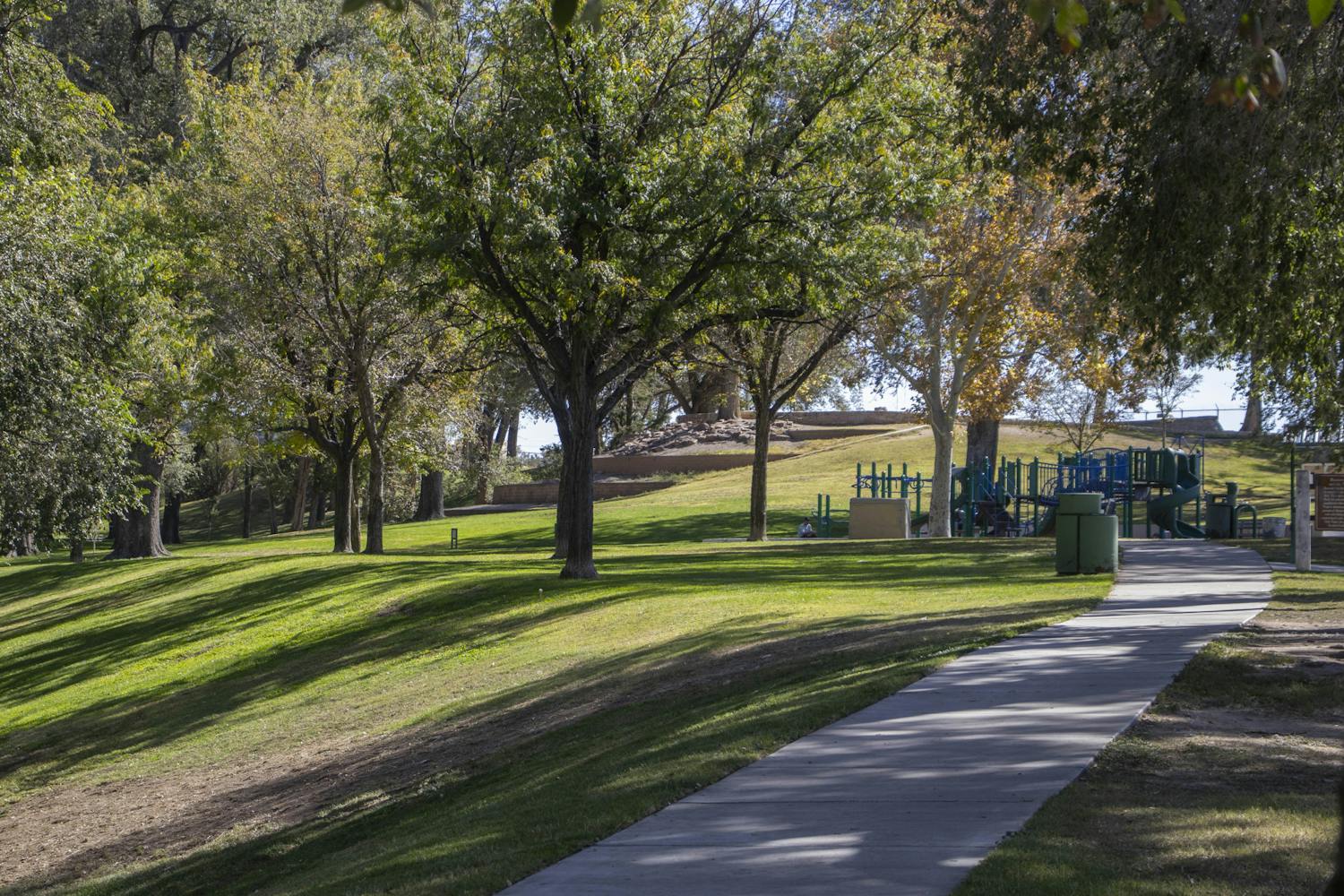On this year's ballot, there are a total of seven municipal General Obligation Bond questions alongside one college bond question.
If any of the G.O. Bonds are passed, money from the city's property tax revenue will be put toward that particular set of capital improvement projects or city maintenance.
The approval of bonds will not cause property taxes to increase, however if a bond is not passed, it could cause a small decrease in property taxes with a $3.80 decrease a month for a home valued at $150,000.
The team at the Daily Lobo has broken down what these bonds mean to give voters context on the projects at hand as they step into the voting booths this November.
Municipal: Public Safety Bond supports districts unevenly
Encompassing several different city departments, the Public Safety bonds would allocate about $25 million in total to the Albuquerque Fire Rescue, Albuquerque Police Department (APD), Albuquerque Community Service (ACS) and the Regional Transportation Management Center (RTMC).
The money is broken down between over $14 million to Fire Rescue Apparatus Replacement, $6 million to APD, $1 million to ACS and $1.5 million to RTCM.
Remaining funds are then split up between districts, excluding District 6 (the International District) and District 2 (downtown and east of the Rio Grande).
“The money is primarily going to assisting police facilities … They're going to the buildings – the actual equipment that they use there. They're not obligated to break down where exactly that money is going,” Jack Champagne, the program and legal director from the New Mexico Black Leadership Council, said.
For districts receiving funds, the amount ranges from $600,000 to District 7 (Uptown and Northeast Heights) and $150,000 to District 3 (Southwest Albuquerque).
While the NMBLC does not formally support or oppose the bond, the lack of funds going towards District 6 was a concern for Champagne.
“We, the NMBLC, are located in District Six which is where the International District is, and I did notice that none of the bond funding is going there, which is a little concerning to me because there are public safety needs here. That is relatively urgent. So the fact that I didn't quite make it in there is concerning,” Champagne said.
Get content from The Daily Lobo delivered to your inbox
There are public comment periods for G.O. bonds and Champagne encouraged more feedback from the community on what districts are receiving funding in future elections.
Municipal: Community Centers and affordable housing
Bonds for $35.8 million are on the ballot to support metropolitan redevelopment, community centers and affordable housing.
Most of the bonds, $13,550,000, would be allocated towards community and senior centers and $7.5 million towards affordable housing.
The rest breaks down with $5 million towards improvements at the Gibson Health Hub center, $3.5 million towards redevelopment, including $2 million towards rail yards around the city as well as specific portions of money for community centers and redevelopment to every district except District 7.
An anonymous representative from the Student Tenant Union at the University of New Mexico – a group focused on affordable housing for students – felt as though the Bonds did not do enough to address the housing issue.
“It lacks the necessary urgency and meaningful measures to address the immediate housing needs of Albuquerque … Additionally, the program overlooks market dynamics that the City can control but chooses not to, likely due to the city's dependence on income related to overvalued real estate,” the representative from STU wrote.
The money allocated towards affordable housing is via the City's Workforce Housing Opportunity Act which outlines the funding and stipulations for affordable housing to be built using the bond funds.
To be considered for housing under the act, income must be below 80% of the area median income for ABQ, currently $44,750 for one person. The monthly housing cost also can’t exceed 30% of the income limit, according to the ordinance.
Workforce housing projects or subdivisions must have 30% of the spaces that meet affordable housing standards. Rental properties also have to have a monitoring deal to ensure affordability, the ordinance states.
Municipal: Bonds for baseball and outdoor space
The Parks and Recreation G.O. Bonds would set aside $34.9 million for improving and developing equipment for local parks and recreational facilities.
The Parks and Recreation Department will receive $21,950,000 for projects such as park, playground and pool renovations along with open space facility improvements.
“The 2023 G.O. Bond package would fund capital projects in 13 core Parks & Recreation Department (PRD) programs, including park irrigation system renovation, park and playground renovations, open space facility improvements, pool renovations, urban forestry, improvements to Balloon Fiesta Park, equipment and vehicles, security and Little Leagues,” Dave Simon – Parks and Recreation Director – wrote.
$5 million of the bond is assigned to North Domingo Baca Aquatic Center.
The Open Space program will also receive $4 million in the 2% of the bond set-aside for open space land acquisition, alongside an additional $750,000 for open space Bosque restoration and $750,000 for facility improvements.
“(Open space provides) outdoor recreation opportunities and economic benefits. Cities with more green space are more economically successful and are also seen as more attractive places to live and operate businesses,” Simon wrote.
The bonds would put $3.4 million towards improving the irrigation systems in its parks. Additionally, for over 288 parks there's $1.5 million set aside to renovate parks and playgrounds managed by Albuquerque's Park Management Division. Nearly $5 million would go towards improving the Little League fields across the city.
“Open space helps maintain the beauty of our City’s setting in the middle (of the) Rio Grande Valley, cools the City and increases our climate resilience,” Simon wrote.
Specifically allocated to phase two of Los Altos’ Master Plan, the bond funnels $500,000 to improve the park by constructing new playgrounds, dog parks and 20 new horseshoe courts capable of hosting regional tournaments. $750,000 is also allocated to go towards park security such as cameras, fences and street lights.
Municipal: Funds to city building, 3% to Energy Conservation Program
Among the Bonds for this election are bonds for energy and water conservation, public facilities and system modernization. This package is the least costly for the election and totals $24,155,000.
These bonds will be focusing on the improvement and rehabilitation of different services and buildings throughout the city.
The main focus is to support official buildings and structures that strictly belong to the city, located in Downtown Albuquerque. $2 million of the $24 will be going exclusively to the repair and rehabilitation of roofs on all of the city buildings.
This includes the funding for public spaces as well, including renovations and rehabilitation of the city courthouse, $1 million to the Plaza del Sol building – which holds public records – and almost $1.5 million to the Isotopes stadium improvements.
Along with the buildings, $1 million from the bond will go towards the purchasing of new and improved city vehicles.
3% of this bond is allocated towards the Energy Conservation Program. A sum of $6 million will be put directly towards the program, which will be implemented directly into the construction and development of energy conservation projects.
Cybersecurity, information technology systems and overall network equipment would also receive funds from this bond. In total, over $3.4 million would go towards the growth and improvement of generic sounding causes such as planning hardware and software upgrades and an IT infrastructure upgrade.
This includes additional and updated cameras in city parking garages, IT infrastructure and geographical systems.
Other parts of the city that will receive funding from these Bonds include the Los Angeles Landfill, the rehabilitation of the Environmental Health Facility and $200,000 for garage Sump Pumps.
Municipal: Street and Transportation Bonds: repair, reconstruct, rehabilitate
G.O. Bond #5 would allocate a total of over $50 million – 25% of the overall Bonds amount – to repair, reconstruct and rehabilitate the overall transportation system within Albuquerque.
These bonds would allow Albuquerque the opportunity to improve public transportation facilities, road systems, bikeways and bipedal systems.
This money is meant to be funneled back to the voters; the city is hoping to do this through emphasizing repair for its streets and modes of transportation, KRQE reported.
The city would allocate $125,000 - $650,000 to each district, except District 2 for the rehabilitation and renovation of streets in each district.
The Bonds have several areas of focus. McMahon Blvd. will be reconditioned between Kayenta and Rockcliff. Funding will also come from State Capital outlay.
Two intersections will be of particular focus for the city – University/Lomas and Alameda/Barstow – and will undergo overall improvements.
The Roadway Widening Project for Paseo del Norte & Unser is anticipated to have better ADA accessibility, landscaping and storm drainage precautions. This project needs to meet the requirement to receive $10 million in federal funding in 2024/2025, along with $4 million from state capital outlay.
Overall pedestrian use is meant to be reconstructed as well through the implementation of bikeways, sidewalks, trails and more.
Adhering to the Americans with Disabilities Act and safety is a large portion of these Bonds. Rights of way and curb ramps are to be built, along with the planning and design of the City counteraction.
The high fatal and injury network, Vision Zero Program, is to be implemented as well. Vision Zero is meant to prevent fatal and severe crashes through a collaborative approach.
“Collaboration among local traffic planners and engineers, policymakers and public health professionals,” Vision Zero’s website reads.
Renovation and rehabilitation toward Transit Facilities are another key focus of this bond, particularly the Yale Transit Facility. $1.9 million will go toward the overall improvement of this transit center.
Municipal: Storm and Sewer System bond
The Storm and Sewer System bonds will be on the upcoming ballot in November. A vote for “yes” means $14,310,000 will be put towards improving and constructing both equipment and facilities. The ballot will read as follows:
“Shall the City of Albuquerque issue $14,310,000 of its General Obligation Bonds to plan, design, develop, construct, reconstruct, rehabilitate, renovate, expand, extend, enhance, study, monitor and otherwise improve, and to acquire property and equipment for the storm sewer system?”
The last Storm and Sewer System bonds were approved in 2021. It funded six projects and cost $4,651,000. Those six projects appear again on the 2023 ballot.
The projects include keeping facilities up to code with EPA standards, funds toward the South Broadway master plan, improving water quality facilities, advanced planning, developing emergency action plans and preventing floods in the Pueblo Alto area.
A total of eight projects are preparing to be funded along with 1.5% ($210,000) of the budget going towards public art. The largest portion of the money, $5 million, will go towards green stormwater management in the Southeast Heights and was not a listed project in 2021.
Green stormwater refers to collecting rainwater where it falls and introducing infrastructure to mimic nature, according to the Environmental Protection Agency.
Green stormwater can be gathered through porous pavement, rain gardens, rain barrels and other methods. Traditional stormwater management is referred to as "gray" and collects rainwater from large flat surfaces such as parking lots and roofs and directs it with the use of pipes and arroyos.
The other new project from 2021 is for pump station rehabilitation. $1 million will be used for purchasing equipment, primarily for the South Broadway Storm Basin.
Municipal: Library, Museum and Cultural Facilities Bonds
A total of $15,595,000 from the Library, Museum and Cultural Facilities Bonds would be used to improve the Balloon Museum and its exhibits, South Broadway Theater, KiMo Theater, Albuquerque Museum, Explora, Unser Museum and Albuquerque libraries.
Funds will also contribute to additional public art installations as well as new materials for all Albuquerque libraries.
“Academic libraries as a whole across the state got $6 million this year. We (New Mexico Consortium of Academic Libraries) take about half of that and we share the cost for buying databases that every academic library in the state can use,” Mark Emmons said – the Associate Dean for Education and Engagement and a professor in the College of University Libraries & Learning Sciences at UNM.
Zimmerman library could receive almost a third of the funds from the G.O. Bonds because it is a part of the largest University in New Mexico.
“It’s an essential piece of what we do because we don’t get quite enough of an allocation every year to buy everything we want to buy,” Emmons said. “If we didn’t have (G.O. Bonds), we’d have to reduce our resources because we received almost a million dollars towards our databases. If the Bonds were to not pass, it would have a drastic effect on our materials budget and we wouldn’t be able to support our students' learning and research as well.”
Emmons said that he wants the Albuquerque community to support libraries through the Bonds being put forth by the legislature. “It means a lot that the citizens of New Mexico value us (Albuquerque libraries) and keep voting ‘yes’ on the Bonds.”
Funds from the bond will afford renovations and upgrades for these community establishments such as new equipment, software, enhanced HVAC systems, landscaping, flooring and other basic amenities.
The Bonds also contributes $240,000 to new art around the city thanks to the initiative, “Art in Municipal Places,” which funnels 1% of the City construction funds produced by G.O. bonds towards art.
College: CNM seeks physical and technological improvements
Central New Mexico Community College has a possible $80 million on the ballot to provide funding to upgrade both the campus and technology.
The Bonds specifically would be used to upgrade the Automotive Technology facilities – creating a new building on Rio Rancho Public School’s Career-Technical Education Complex – to be used in partnership with the public schools to provide dual credit, according to Brad Moore – the Director of Communications & Media Relations at CNM and Chief Strategy Officer Angela Sims.
“These improvements are necessary for CNM to provide modernized learning environments that prepare our students for success in classrooms and the workplace, while also addressing major workforce needs in our region,” Brand wrote.
The Auto Mechanic, Diesel Mechanic and new Electric Vehicle Mechanic programs would be moved permanently to Rio Rancho.
“By establishing a new facility and relocating vital programs, CNM is poised to provide students with cutting-edge resources, industry connections and hands-on experiences that will prepare them for the dynamic and evolving automotive industry,” Sims wrote.
The money from the bond will also be used to create CNM’s Film and Digital Media Center at the Rail Yards “to support the workforce needs of the film industry,” Moore wrote.
The Bonds would also fund a permanent location for the FUSE Makerspace currently located on Central and Broadway, alongside $3 million that would complete the Trades & Applied Technology Facility project, according to Sims. The Trades & Applied Technology Facility is anticipated to be done by 2025.
“Altogether it (The Trades Applied Technology Facility) will provide 60,750 square feet of classroom and lab space and will house CNM’s Carpentry, Electrical, Heating Ventilation and Air Conditioning (HVAC), Plumbing, Industrial Automation Technology (Mechatronics) and Welding programs,” a CNM press release from June 22 reads.
Other physical campus improvements the Bonds would bring are a new intersection on University between Coal and Baseheart, additional parking spaces and technological updates to their Student information system and cloud system, according to Sims.
BillyJack Davidson is a beat reporter at the Daily Lobo. He can be reached at news@dailylobo.com or on Twitter @BillyJackDL
Zaina Naru is the News Editor at the Daily Lobo. She can be contacted at news@dailylobo.com
Karina Bolaños is the Culture Editor at the Daily Lobo. They can be contacted at culture@dailylobo.com
Thomas Bulger is the sports editor for the Daily Lobo. He can be contacted at sports@dailylobo.com or on Twitter @thomasbulger10
Kelsa Mendoza is the copy chief at the Daily Lobo. She can be reached at copychief@dailylobo.com or on Twitter at @kelsar4in.
Maddie Pukite is the editor-in-chief at the Daily Lobo. They can be contacted at editorinchief@dailylobo.com on Twitter @maddogpukite
BillyJack Davidson is a beat reporter at the Daily Lobo. He can be reached on Twitter @BillyJackDL
Maddie Pukite is the 2023-2024 editor of the Daily Lobo.
Thomas Bulger is the sports editor for the Daily Lobo. He can be contacted at sports@dailylobo.com or on Twitter @thomasbulger10



